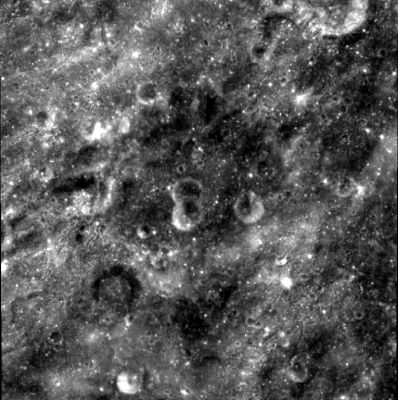


Although the first images were of very low quality, the Soviets couldn’t resist the urge to name newly discovered features for a variety of Russian heroes and place names, such as Tsiolkovsky and the Sea of Moscow. To the surprise of most, large regions of maria (so prominent on the near side) were mostly missing from the far side.

With the flight of the Luna 3 probe in 1959, the Soviet Union was the first nation to image the far side of the Moon. In 1651, an influential map by Jesuit astronomers Grimaldi and Riccioli became the foundation for the official naming reference guide that we use today. Most of those early names have been forgotten to history. As telescopes improved, revealing finer surface details, several maps appeared with names bestowed by their astronomer authors to flatter patrons or express their nationalism. The drawings by Galileo of the Moon in 1610 show craters and mountain ranges but he did not assign names to them. But even now, many lunar craters and features await something more than mere coordinates. (How wrong they were!) Naturally, once we had the ability to see uncharted lunar territory, a new era of name assignment commenced. Before the advent of the space age, only the near side of the Moon was visible, although most scientists believed that the far side probably looked exactly like the one facing Earth. The dark, smooth maria are named for weather or states of mind (Sea of Rains, Sea of Tranquility) while many of the abundant craters of the Moon are named for famous scientists, philosophers, mathematicians and explorers. The Moon is remarkable for the variety and unusual nature of the names of its surface features. Most of the names on this map are still in use today.
#Clementine moon atlas 1st edition book professional
With one of the most complete and up-to-date lunar nomenclature databases, this is an indispensable reference for professional planetary and space scientists, amateur astronomers, and lunar enthusiasts.Map of the Moon by Grimaldi and Riccioli, 1651. This edition has been fully revised and extended to cover the armada of new missions that have launched since 2004. The first part of the atlas describes the origin and geological evolution of the Moon and gives a brief history of lunar science and exploration, while the second features double-page spreads consisting of Clementine images paired with newly created shaded-relief maps generated from LROC topography data. Based on information gathered from this mission combined with data from recent missions, this unique atlas contains 144 maps covering the entire lunar surface, along with colour plates showing the Moon’s composition and physical properties. The Blurb: The highly successful Clementine mission gave scientists their first global look at the Moon. This book was purchased using the proceeds of the 2015 Christmas Raffle. The Clementine Atlas of the Moon by Ben Bussey and Paul D. Author / Publisher : Ben Bussey & Paul Spudis


 0 kommentar(er)
0 kommentar(er)
